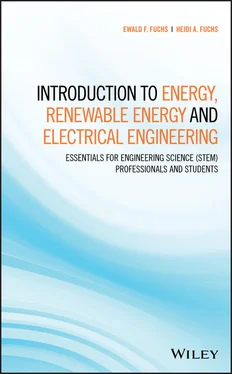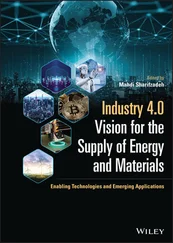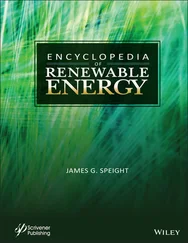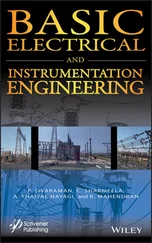1 ...7 8 9 11 12 13 ...19 576 539
577 540
578 541
579 542
580 543
581 544
582 545
583 546
584 547
585 548
586 549
587 550
588 551
589 552
590 553
591 554
592 555
593 556
594 557
595 558
596 559
597 560
598 561
599 562
600 563
601 564
602 565
603 566
604 567
605 568
606 569
607 570
608 571
609 572
610 573
611 574
612 575
613 576
614 577
615 578
616 579
617 580
618 581
619 582
620 583
621 584
622 585
623 586
624 587
625 588
626 589
627 590
628 591
629 592
630 593
631 594
632 595
633 596
634 597
635 598
636 599
637 600
638 601
639 602
640 603
641 604
642 605
643 606
644 607
645 608
646 609
647 610
648 611
649 612
650 613
651 614
652 615
653 616
654 617
655 618
656 619
657 620
658 621
659 622
660 623
661 624
662 625
663 626
664 627
665 628
666 629
667 630
668 631
669 632
670 633
671 634
672 635
673 636
674 637
675 638
676 639
677 640
678 641
679 642
680 643
681 644
682 645
683 646
684 647
685 648
686 649
687 650
688 651
689 652
690 653
691 654
692 655
693 656
694 657
695 658
696 659
697 660
698 661
699 662
700 663
701 664
702 665
703 666
704 667
705 668
706 669
707 670
708 671
709 672
710 673
711 674
712 675
713 676
714 677
715 678
716 679
717 680
718 681
719 682
720 683
721 684
722 685
723 686
724 687
725 688
726 689
727 690
728 691
729 692
730 693
731 694
732 695
733 696
734 697
735 698
736 699
737 700
738 701
739 702
740 703
741 704
742 705
743 706
744 707
745 708
746 709
747 710
748 711
749 712
750 713
751 715
752 716
753 717
754 718
755 719
756 720
757 721
758 722
759 723
760 724
761 725
762 726
763 727
Introduction to Energy, Renewable Energy, and Electrical Engineering
Essentials for Engineering Science (STEM) Professionals and Students
Ewald F. Fuchs
University of ColoradoBoulder, CO, USA
Heidi A. Fuchs
Lawrence Berkeley National LaboratoryBerkeley, CA, USA

This edition first published 2021
© 2021 John Wiley & Sons, Inc.
All rights reserved. No part of this publication may be reproduced, stored in a retrieval system, or transmitted, in any form or by any means, electronic, mechanical, photocopying, recording or otherwise, except as permitted by law. Advice on how to obtain permission to reuse material from this title is available at http://www.wiley.com/go/permissions.
The right of Ewald F. Fuchs and Heidi A. Fuchs to be identified as the authors of this work has been asserted in accordance with law.
Registered Office(s) John Wiley & Sons, Inc., 111 River Street, Hoboken, NJ 07030, USA
Editorial Office John Wiley & Sons, Inc., 111 River Street, Hoboken, NJ 07030, USA
For details of our global editorial offices, customer services, and more information about Wiley products visit us at www.wiley.com.
Wiley also publishes its books in a variety of electronic formats and by print‐on‐demand. Some content that appears in standard print versions of this book may not be available in other formats.
Limit of Liability/Disclaimer of Warranty While the publisher and authors have used their best efforts in preparing this work, they make no representations or warranties with respect to the accuracy or completeness of the contents of this work and specifically disclaim all warranties, including without limitation any implied warranties of merchantability or fitness for a particular purpose. No warranty may be created or extended by sales representatives, written sales materials or promotional statements for this work. The fact that an organization, website, or product is referred to in this work as a citation and/or potential source of further information does not mean that the publisher and authors endorse the information or services the organization, website, or product may provide or recommendations it may make. This work is sold with the understanding that the publisher is not engaged in rendering professional services. The advice and strategies contained herein may not be suitable for your situation. You should consult with a specialist where appropriate. Further, readers should be aware that websites listed in this work may have changed or disappeared between when this work was written and when it is read. Neither the publisher nor authors shall be liable for any loss of profit or any other commercial damages, including but not limited to special, incidental, consequential, or other damages.
Library of Congress Cataloging‐in‐Publication Data is applied for
Hardback: 9781119448334
Cover Design: Wiley
Cover Image: © Joe Therasakdhi/Shutterstock
This book is based on the author's experience gained in teaching Electrical and Computer Engineering (ECEN) 3030, Circuits for Non‐Majors [1] at the University of Colorado for eight years, as well as the input provided by undergraduate and graduate students, and the second author's research experience at Lawrence Berkeley National Laboratory, whose mission is to foster groundbreaking fundamental science that enables transformational solutions for energy and environment challenges, using interdisciplinary teams and by creating advanced new tools for scientific discovery. The encouragement and support of Dipl.‐Ing. Dietrich J. Roesler, formerly with the US Department of Energy (DOE), Washington, DC, one of the first professionals initiating the research of photovoltaic power plants [2] as part of the mission, is greatly appreciated. The authors wish to express gratitude to wife/mother Wendy L. Fuchs and son/brother Franz S. Fuchs for their help in shaping and proofreading the manuscript. Lastly, the work on numerical field calculation [3] initiated by the late Professor Edward A. Erdelyi is reflected in part of this book by assisting in the visualization of magnetic fields as they occur in electric apparatus.
1 Fuchs E.F. Undergraduate course, ECEN 3030: circuits for non‐majors, Fall 2011. Prerequisites: APPM 2350 Calculus III. University of Colorado at Boulder, Department of Electrical, Computer, and Energy Engineering. http://thiscourse.com/colorado/ecen3030/fa10(accessed 11 May 2020).
2 Dugan, R.C., Jewell, W.T., and Roesler, D.J. (1983). Harmonics and reactive power from line‐commutated inverters in proposed photovoltaic subdivision. ID: 6637722, DOE Report Contract Number W‐7405‐ENG‐2 (1 January 1983).
3 Trutt, F.C., Erdelyi, E.A., and Jackson, R.F. (1963). The non‐linear potential equation and its numerical solution for highly saturated electrical machines. IEEE Trans. Aerosp. 1 (2): 430–440.
Читать дальше













